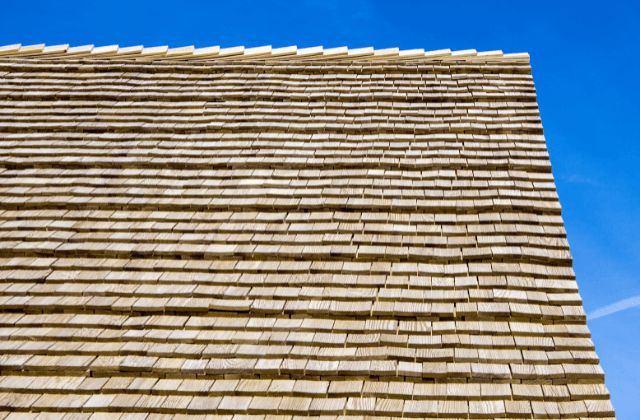Cedar roofing is popular with homes for its natural beauty, durability, and insulation. Cedar roofs have many benefits, but natural elements and weather circumstances can damage them. Cedar shingles warping or curling is a typical problem for homeowners, affecting roof appearance and functionality. Maintaining the integrity and longevity of a cedar roof requires understanding the reasons for warping and how to fix them. Our experts explore the causes of cedar roof warping and offer tips for homeowners to maintain its beauty and durability.
Why Do Cedar Roofs Curl?
With its reputation for strength and unmatched aesthetic, cedar roofing is a popular home option. Like all natural materials, cedar can twist or curl due to exposure to specific environmental variables. Maintaining the longevity and integrity of a cedar roof requires understanding these aspects.
Moisture
Moisture is the main culprit behind cedar roof warping, which is why the question “What causes a cedar roof to warp?” is frequently asked. Because cedar is a naturally occurring wood, it naturally absorbs and releases moisture from its surroundings. The wood expands and contracts as a result of this property. Cedar shingles can bend or curl if they absorb moisture unevenly or dry out too rapidly. This warping is more than simply an aesthetic problem; it increases the risk of wind-lifting or breaking cedar shingles, which can cause damage to the roof.
Improper Maintenance
Inadequate maintenance or installation of the roof is another reason why cedar shingles curl. Cedar roofs need to have enough ventilation to let moisture escape and lessen the chance of the shingles warping. The likelihood of warping a cedar roof increases dramatically if it is not maintained with regular cleaning and treatment or if it is not constructed with sufficient spacing for expansion and contraction.
How to Prevent Cedar Roofs from Warping
There are multiple proactive steps involved in preventing a warping cedar roof. First of all, it’s important to select cedar that is of the proper quality. Even though they cost more, higher-quality shingles resist environmental stressors and are less likely to bend. Ensuring correct installation is also essential. This entails maintaining the proper shingle spacing and guaranteeing the roof has enough ventilation to let moisture escape.
Preventing warping requires regular maintenance. This involves treating the wood to resist water and UV rays and washing the roof to remove moss and debris that hold moisture. Regularly checking the roof and fixing any issues reduces the risk of catastrophic cedar roof damage.
Factors That Affect Cedar Shingles
Weather
Many variables can impact cedar shingle integrity and moisture and maintenance-related problems. Extreme weather exposure, such as extended periods of sunshine, persistent rain, or snow, can hasten the shingles’ deterioration. This may cause homeowners to worry about how to fix curling shingles more frequently over time.
Pests
Pests and insects can also threaten cedar roofs. Termites and carpenter ants are two examples of wood-boring insects that can weaken the cedar’s structural integrity, causing additional warping and damage. One of the most important parts of keeping a cedar roof is preventing pest infestation through routine treatments and inspections.
Preserving Cedar Roof’s Beauty and Durability
Cedar roofs are a lovely and long-lasting roofing material, but installation, upkeep, and environmental conditions must be carefully considered. Homeowners can prevent warping and preserve the aesthetic appeal and long-term usefulness of their cedar roofing for many years by being aware of the factors contributing to warping in cedar roofs. As the most trusted roofing company in London, Ontario, Davidoff Roofing has been dedicated since 1983 to providing homeowners with reliable roofing solutions that stand the test of time, ensuring each cedar roof we install remains as enduring and elegant as the day it was first laid.
